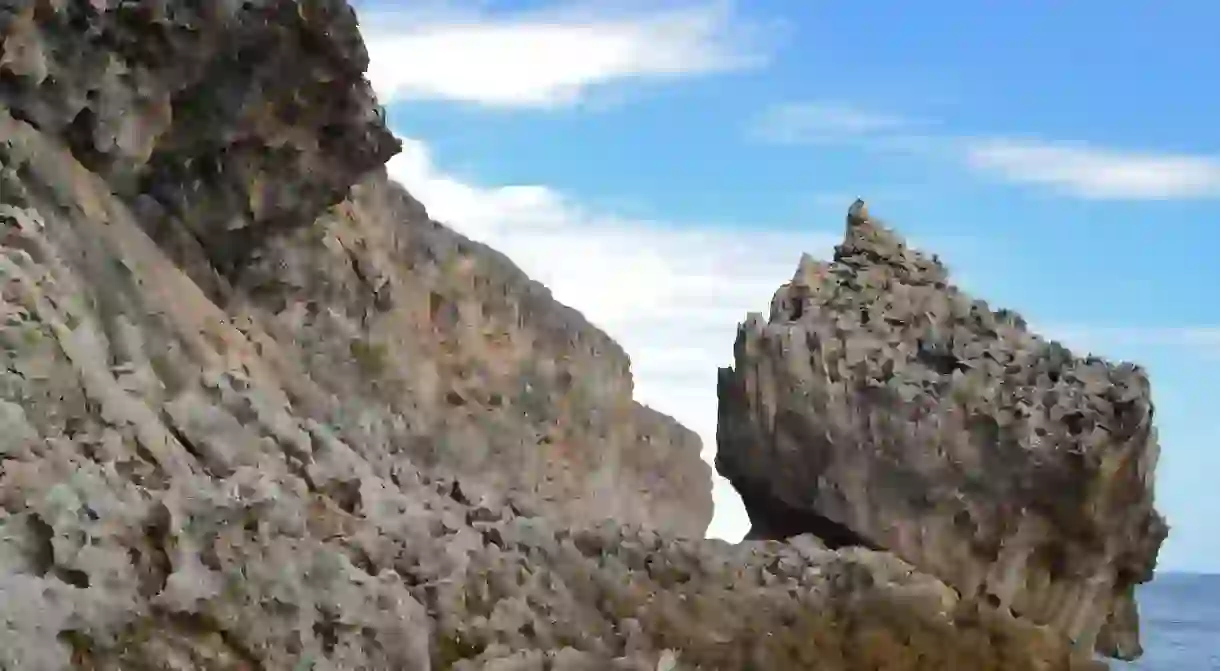Places to Visit in West Virginia's Monongahela National Forest

The Monongahela National Forest is an expansive 921,000 acres (3,727 km2) in the eastern-central part of West Virginia. First established in 1920, the forest provides places to hike, bike, horseback ride, swim, fish, and just about any outdoor activity you can think of. Here are the nine best places to check out in the forest.
Dolly Sods Wilderness
The northern part of the Monongahela National Forest borders Canaan Valley, which has lots of places to hike, camp, and be outside. The place to visit in the forest here is the Dolly Sods Wilderness area, where you can hike on 47 miles (75.5 km) of trails and backcountry camp. The views of beautiful forests and mountains are amazing any time of year, but always make sure that you have sturdy footwear and appropriate clothing, since the weather can change rapidly.

Spruce Knob
Spruce Knob is the highest point in the forest and in West Virginia. You can hike or drive to the lookout tower, which offers gorgeous views of the Allegheny Mountains. In every direction you look from the top of the tower, the massive forest is in front of you. The area also has picnic tables and trails to hike on.

Seneca Rocks
This famous West Virginia landmark is a must-visit when you are in the state. The rocks were one of the first established climbing areas in the eastern United States, and local outfitters offer lessons, gear rental, and guided climbs. Seneca Rocks also has a visitor center that explains the natural history of the area and how the rocks were formed. You can hike the top of the rocks for a beautiful view of the valley, and while the hike is only 1.5 miles (2.4 km), the elevation climb makes it fairly strenuous.

Cranberry Glades
At the Cranberry Glades Botanical Area, you will transported to a different climate from the one typically found in central West Virginia. These bogs are more similar to wetlands found in the northern United States and Canada, and are full of cranberry plants, carnivorous bug-eating pitcher plants, and wild orchids. The Forest Service has installed a boardwalk so you can enjoy this unusual place without disturbing the plants and wildlife that call these 750 acres (3 km2) home.

Cranberry Mountain Nature Center
Located right next to the Cranberry Glades area is the Cranberry Mountain Nature Center. The center is open seasonally from April to October, and has a native plant garden and nature trail that showcase some of the plants you may see in the area. They offer many events geared towards children and guided tours around the center. This is the perfect place to visit before a hike in Cranberry Glades, or a place to stop and have picnic lunch while you’re driving along the Highland Scenic Highway.

Highland Scenic Highway
The Highland Scenic Highway takes you right through the National Forest. As you follow U.S. Route 219, State Route 39/55, and State Route 150, you’ll come to four scenic overlooks, the Cranberry Mountain Nature Center, and a waterfall. You can access over 150 miles (241 km) of trails from the highway, and there are plenty of places to camp along the route, too.

Gaudineer Knob
Gaudineer Knob is a treasure inside the forest. Before the National Forest was established in 1920, much of West Virginia was clear-cut to provide timber and fuel for the industrial economy in eastern cities, so many of the trees in the forest are actually less than 100 years old. However, a surveying error and property ownership mix-up left a stand of trees at Gaudineer Knob uncut. Here, you can view an old-growth stand of trees on a half-mile trail that feels a little magical. You also get impressive views of the surrounding mountains and forest from the Gaudineer Scenic Overlook. If you’re looking for a longer hike, the Allegheny Trail is nearby.

Lake Sherwood Recreation Area
If you’re looking to enjoy a mountain lake in the forest, visit the Lake Sherwood Recreation Area. Here, you’ll find beaches for swimming, spots to fish, and you can even rent canoes nearby. The area features 104 individual campsites and 10 group sites, with restrooms that have showers, hot water, and flush-toilets. There are also trails nearby to explore.

Cass Scenic Railroad
While not a part of the National Forest, the Cass Scenic Railroad State Park is located right in the middle of the forest. Here, you can experience the lives of the loggers who came to clear-cut the mountains in the late 1800s. You can learn more about the forest and what happened before and after the clear-cutting in the region. A historic steam engine can take you to the state’s third-highest peak and the park offers lodging in the former company-owned town.

Did you know – Culture Trip now does bookable, small-group trips? Pick from authentic, immersive Epic Trips, compact and action-packed Mini Trips and sparkling, expansive Sailing Trips.













